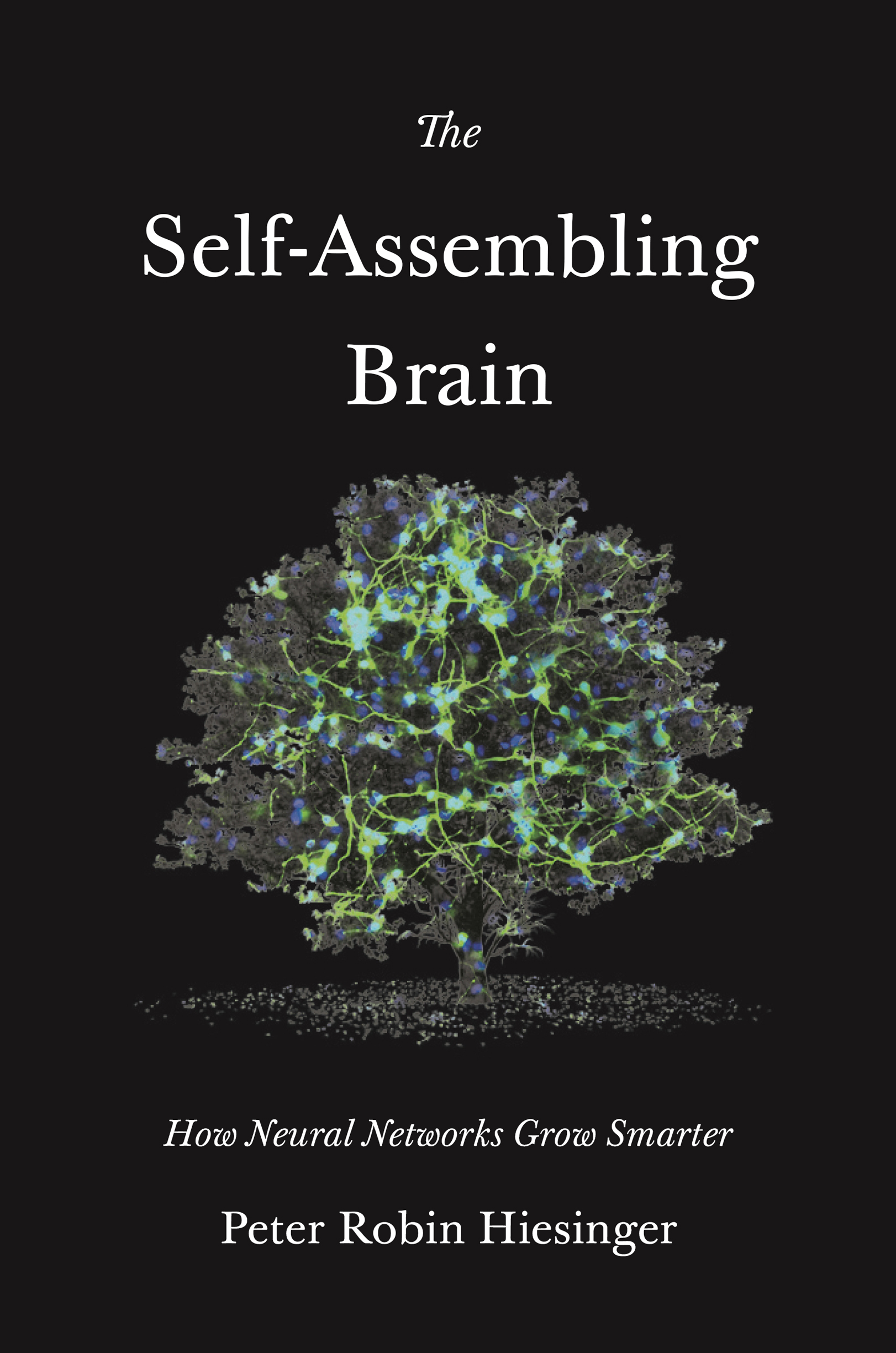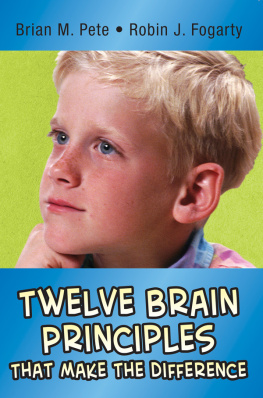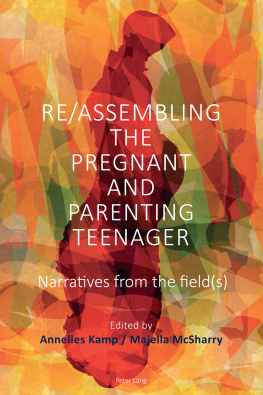Hiesinger Peter Robin - The Self-Assembling Brain
Here you can read online Hiesinger Peter Robin - The Self-Assembling Brain full text of the book (entire story) in english for free. Download pdf and epub, get meaning, cover and reviews about this ebook. year: 2021, publisher: Princeton University Press, genre: Art. Description of the work, (preface) as well as reviews are available. Best literature library LitArk.com created for fans of good reading and offers a wide selection of genres:
Romance novel
Science fiction
Adventure
Detective
Science
History
Home and family
Prose
Art
Politics
Computer
Non-fiction
Religion
Business
Children
Humor
Choose a favorite category and find really read worthwhile books. Enjoy immersion in the world of imagination, feel the emotions of the characters or learn something new for yourself, make an fascinating discovery.

- Book:The Self-Assembling Brain
- Author:
- Publisher:Princeton University Press
- Genre:
- Year:2021
- Rating:5 / 5
- Favourites:Add to favourites
- Your mark:
- 100
- 1
- 2
- 3
- 4
- 5
The Self-Assembling Brain: summary, description and annotation
We offer to read an annotation, description, summary or preface (depends on what the author of the book "The Self-Assembling Brain" wrote himself). If you haven't found the necessary information about the book — write in the comments, we will try to find it.
The Self-Assembling Brain — read online for free the complete book (whole text) full work
Below is the text of the book, divided by pages. System saving the place of the last page read, allows you to conveniently read the book "The Self-Assembling Brain" online for free, without having to search again every time where you left off. Put a bookmark, and you can go to the page where you finished reading at any time.
Font size:
Interval:
Bookmark:

THE SELF-ASSEMBLING BRAIN
The Self-Assembling Brain
HOW NEURAL NETWORKS GROW SMARTER
PETER ROBIN HIESINGER
PRINCETON UNIVERSITY PRESS
PRINCETON & OXFORD
Copyright 2021 by Princeton University Press
Princeton University Press is committed to the protection of copyright and the intellectual property our authors entrust to us. Copyright promotes the progress and integrity of knowledge. Thank you for supporting free speech and the global exchange of ideas by purchasing an authorized edition of this book. If you wish to reproduce or distribute any part of it in any form, please obtain permission.
Requests for permission to reproduce material from this work should be sent to
Published by Princeton University Press
41 William Street, Princeton, New Jersey 08540
6 Oxford Street, Woodstock, Oxfordshire OX20 1TR
press.princeton.edu
All Rights Reserved
Library of Congress Cataloging-in-Publication Data
Names: Hiesinger, Peter Robin, author.
Title: The self-assembling brain : how neural networks grow smarter / Peter Robin Hiesinger.
Description: Princeton : Princeton University Press, [2021] | Includes bibliographical references and index.
Identifiers: LCCN 2020052826 (print) | LCCN 2020052827 (ebook) | ISBN 9780691181226 (hardback) | ISBN 9780691215518 (pdf)
Subjects: LCSH: Neural networks (Computer science) | Neural circuitryAdaptation. | LearningPsysiological aspects. | Artificial intelligence.
Classification: LCC QA76.87 .H53 2021 (print) | LCC QA76.87 (ebook) | DDC 006.3/2dc23
LC record available at https://lccn.loc.gov/2020052826
LC ebook record available at https://lccn.loc.gov/2020052827
eISBN 9780691215518 (ebook)
Version 1.0
British Library Cataloging-in-Publication Data is available
Editorial: Ingrid Gnerlich and Mara Garcia
Production Editorial: Karen Carter
Jacket Design: Layla Mac Rory
Production: Jacqueline Poirier
Jacket Credit: Neural stem cells, fluorescence light micrograph. Photo by Daniel Schroen, Cell Applications, Inc. / Science Photo Library
For Nevine and Nessim,
and in memory of Gabriele Hiesinger
- xi
- xiii
THIS BOOK is the result of many discussions. I am very grateful to all the colleagues, students and friends who endured and challenged me in these discussions over the years. I have experimented with the introduction of the key concepts in basic lectures on neurodevelopment at my home university as well as in seminars around the world. The ensuing debates have influenced my thinking and writing a great dealso much so, that nothing in this book can possibly be entirely my own.
For reading and commenting on various parts, I am particularly grateful to Bassem Hassan, Nevine Shalaby, Randolf Menzel, Michael Buszczak, Grace Solomonoff, Dietmar Schmucker, Gerit Linneweber, Adrian Rothenfluh, Sansar Sharma, Iris Salecker, Axel Borst, Ian Meinertzhagen, Arend Hintze, Roland Fleming, Tony Hope, Uwe Drescher, QL Lim, Stuart Newman, and many students in my classes and my lab over the years.
For historic information and picture material I thank Sansar Sharma, Margaret and Gloria Minsky, Cynthia Solomon, Grace Solomonoff, Robinetta Gaze and Tony Hope, the Walt Girdner family, the Estate of W. Ross Ashby, Jessica Hill from Wolfram Companies, Nikki Stephens from The Perot Museum Dallas, Nozomi Miike from the Miraikan in Tokyo, as well as the librarians from Cold Spring Harbor Image Archives, Caltech Archives, Cornell Library and the MIT Museum.
I thank Princeton University Press, and especially my editor Ingrid Gnerlich, for expert guidance and support throughout the last three years.
ONCE THERE was an alien who found an apple seed from earth. This looks funny, it said, I wonder what it does? The alien was very smart. In fact, it was the smartest alien there ever was, and it scanned the apple seed with the most sophisticated scanning machine that ever existed or that would ever exist. The scan worked well, and the alien got all the information there was in the seed. The alien immediately saw and understood the way the molecules were arranged, every single one of them, the genetic code, the entire information content of the DNA sequence. It was all there, and it was beautiful. There were patterns in the sequence, for which the computer provided a complete analysis. The computer calculated the most advanced mathematics and showed that the code was profound, it had meaning. But what did it do? And so the alien thought: Now that I have all the information that could ever be extracted from the seed, I want to find out what information it can unfold in time. And the alien took the seed and let it grow. The alien watched the trees growth with surprise and curiosity, and it saw the branches, the leaves and finally the apples. And the alien took an apple and said I would never have guessed it would look like that. And then it took a bite.
THE SELF-ASSEMBLING BRAIN
THERE ARE EASIER THINGS to make than a brain. Driven by the promise and resources of biomedical research, developmental neurobiologists are trying to understand how it is done. Driven by the promise and advances of computer technology, researchers in , scientists study how such abilities are encoded in networks of interconnected components. The components are nerve cells, or neurons, in biological brains. In AI, the term neuron has been readily adopted to describe interconnected signaling components, looking back on some 70 years of ANN research. Yet, to what extent the biological analogy is useful for AI research has been a matter of debate throughout the decades. It is a question of how much biological detail is relevant and needed, a question of the type of information necessary to make a functional network. The information problem underlies both fields. What type of information is necessary to wire a brain? What do biologists mean when they say something is encoded by genes, and how is genetic information transformed into a brain? And finally, to what extent is the same type of information required to wire up biological brains or to create artificial intelligence?
This book is about the information problem and how information unfolds to generate functional neural networks. In the case of biological brains, prior to learning, the information for developmental growth is encoded in the But if this were so, how could, say, a monarch butterfly be born with the ability to follow thousands of miles of a migration route that it has never seen before?
As temperatures drop in the fall in North America, millions of monarch butterflies migrate for up to 3,000 miles to overwinter in Mexico. Remarkably, millions of butterflies distributed over close to 3 million square miles in the north all target only a few overwintering sites that cover less than a single square mile. Many theories have been put forth as to how a butterfly could do this. By the time temperatures drop again in the fall in North America, a monarch butterfly is about to embark on the 3,000-mile trip south to a precise location that was last visited by its great-great-grandfather. Where is this information coming from?
The currently almost exclusive focus of AI on ANNs is a highly successful, but recent development. It followed several decades during which AI and How does information about the role of a gene for a neuronal membrane protein help to program an intelligent system? The history of AI is a history of trying to avoid unnecessary biological detail in trying to create something that so far only exists in biology. The observation begs the question what information can safely be deemed unnecessary. To address this question, we need to look at biological and artificial brain development from the information perspective. An assumption and hope of AI research has long been that there is a shortcut to creating intelligent systems. We may not yet know what shortcuts work best, but it seems a good idea to at least know exactly what it is we are trying to leave out in attempts to create nonbiological brains. My hope is that an understanding of the way information is encoded and transformed during the making of biological brains proves useful in the discussion what can and cannot be shortcut in the making of AI. This is the story of a neurobiologist tracking down that information.
Font size:
Interval:
Bookmark:
Similar books «The Self-Assembling Brain»
Look at similar books to The Self-Assembling Brain. We have selected literature similar in name and meaning in the hope of providing readers with more options to find new, interesting, not yet read works.
Discussion, reviews of the book The Self-Assembling Brain and just readers' own opinions. Leave your comments, write what you think about the work, its meaning or the main characters. Specify what exactly you liked and what you didn't like, and why you think so.












